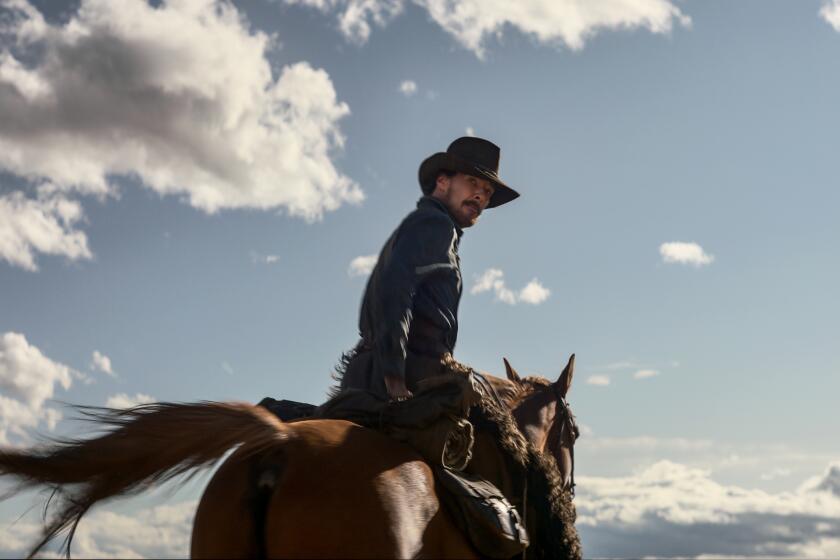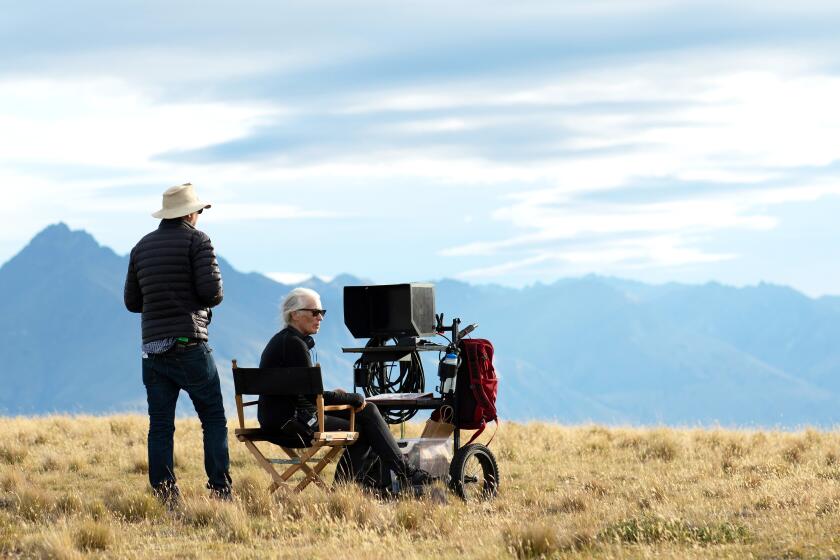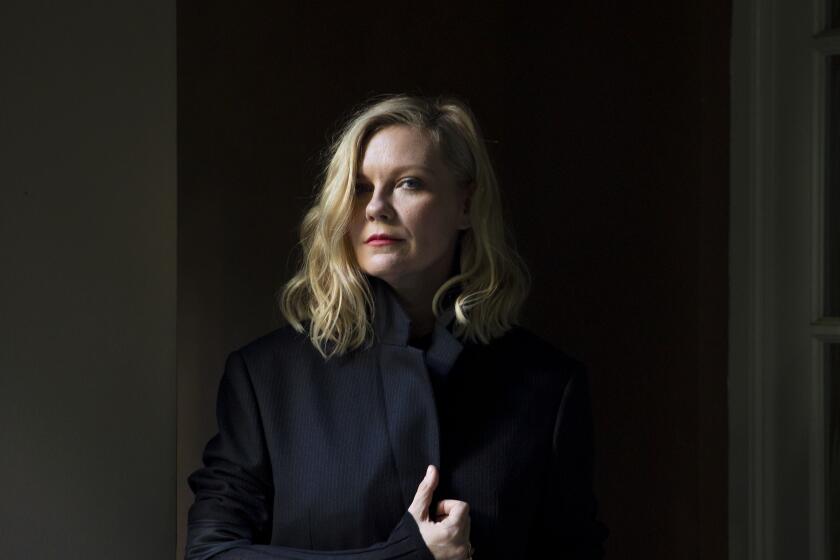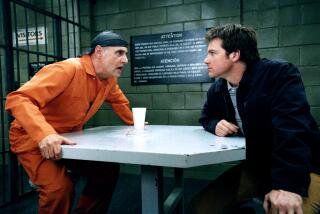Kodi Smit-McPhee walks us through that ‘Power of the Dog’ ending
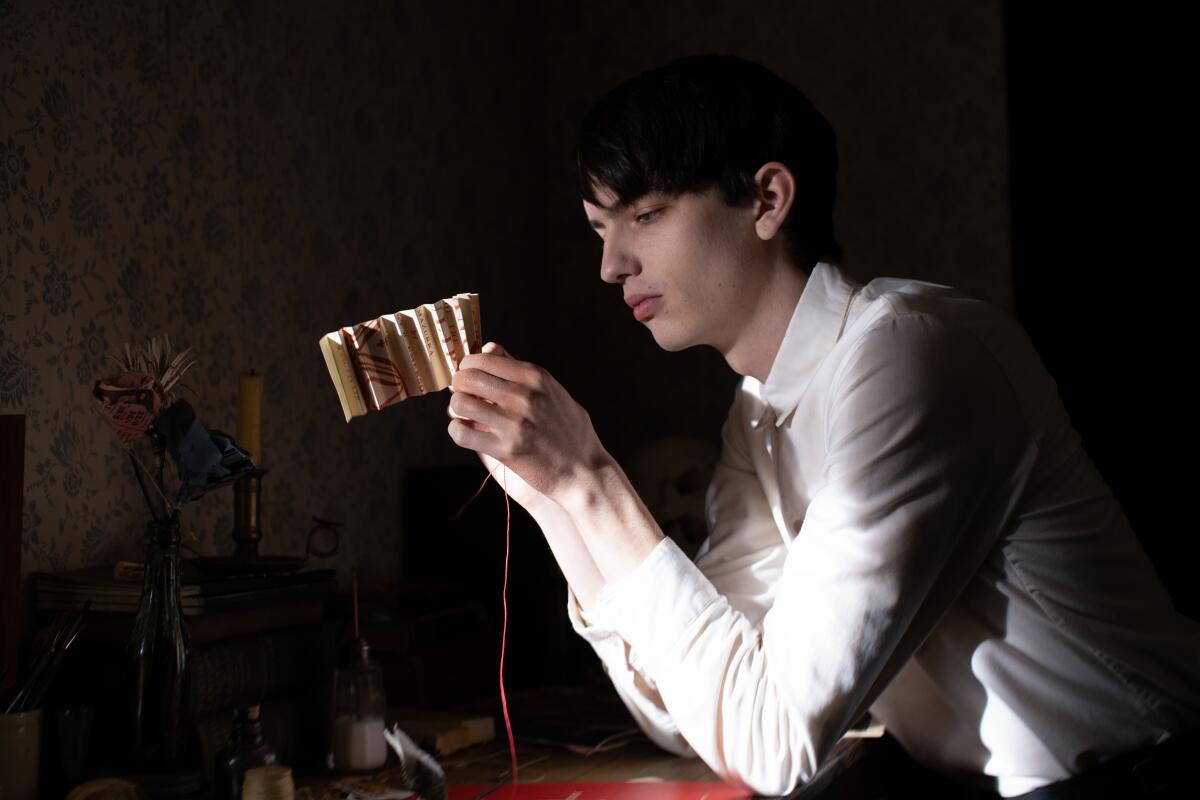
- Share via
Spoiler warning: The following interview discusses key details of Netflix’s “The Power of the Dog,” including the ending. If you haven’t yet seen the film, come back when you have, and check out our review, profile of director Jane Campion and interview with co-star Kirsten Dunst.
Five minutes into “The Power of the Dog,” we meet Peter (Kodi Smit-McPhee), a frail-looking young man sitting alone in his room, painstakingly crafting paper flowers that will be placed as table centerpieces in the restaurant inn that his mother, Rose (Kirsten Dunst), owns.
Later that evening, those flowers will turn to ash, burned by the bullying cattle rancher Phil (Benedict Cumberbatch), the first in a series of threatening acts directed toward Peter and his mother, menace that gives Jane Campion’s chamber piece western a mounting, almost unbearable tension — which Smit-McPhee felt acutely when first reading the script.
“I felt sorry for Peter the whole time,” Smit-McPhee, 25, says during a recent conversation at a Santa Monica restaurant. “I had so many judgments about the way he carried himself. Eventually those judgments solidified and I just had this sense of impending doom coming toward him.”
And then we come to understand that perhaps we weren’t seeing Peter clearly.
Smit-McPhee is right there with us. When he reached the end of his first pass through the script, he flipped back a few pages to make sure he hadn’t missed anything.
“I didn’t miss anything,” the intense Australian actor says, smiling.
If you’ve seen “The Power of the Dog” — and, again, if you haven’t, bookmark this page for later reading — you might be wondering if you missed anything too. Smit-McPhee, a newly minted New York Film Critics Circle supporting actor winner, is here to answer all your questions, from the reasons behind Peter’s choice of footwear to the movie’s astonishing ending.
Kirsten Dunst, Jesse Plemons and Kodi Smit-McPhee co-star in this superlative Netflix adaptation of Thomas Savage’s novel.
When does Peter decide to murder Phil?
It’s ambiguous, so this is just me ... but I think it’s when he sees him burn the flowers.
It goes all the way back to the flowers? I thought it was prompted by seeing his mother descend into alcoholism, thanks to Phil’s cruelty.
Sure. But Phil’s certainly on Peter’s radar from that first night. It’s a beautiful metaphor. Phil’s burning roses, which he is about to do to Peter’s mother, destroying her. But I think Peter’s also upset that Phil brought him almost to the point of crying on that first encounter. He didn’t know he could get hurt that easily.
Yes, Peter goes outside and we see him spinning the hula hoop, which I initially saw as a coping mechanism, like those fidget spinners that were so popular a few years ago.
It looks like he’s trying to soothe his anxiety. It feels like he’s lost control. But it’s quite the opposite. He is managing. He is absolutely in control.
With Netflix’s “The Power of the Dog,” Jane Campion is enjoying her most celebrated film in years. And the long journey makes it all the sweeter.
Same with him running his fingers across the teeth of the comb, which we see him doing during times of apparent stress. The initial impression is he’s trying to cope ... or annoy his mother. Or both!
You know, doing that with the comb calmed me down when playing him. But I think for Peter, it’s a way of managing his thoughts and emotions. It’s a physical manifestation of the way his mind works, sparking off different thoughts and plans. Same with the hula hoop. Go back and watch it and I don’t think you’ll ever see someone spin a hula hoop with that much anger.
OK. So you think Peter always planned to kill Phil and when he learns about the calves dying from anthrax, that tidbit sparks the idea to put the plan into action?
Cutting the anthrax out of the cow, much like killing the rabbit in his room, is partly fulfilling his ambition toward becoming a doctor. But Peter is an improviser. He goes with the flow. And when he sees that Phil has nicked his hand, that gives him the idea to contaminate the rawhide and infect him.
Peter is constantly assessing, waiting for the perfect moment to strike. I guess that’s in the nature of many animals, but for Peter, I chose the fox to assimilate his character with. They’re so light on their feet and they’re pretty and they look delicate and sweet. And yet they can tiptoe up to a hole and pounce right in and you’re a goner.
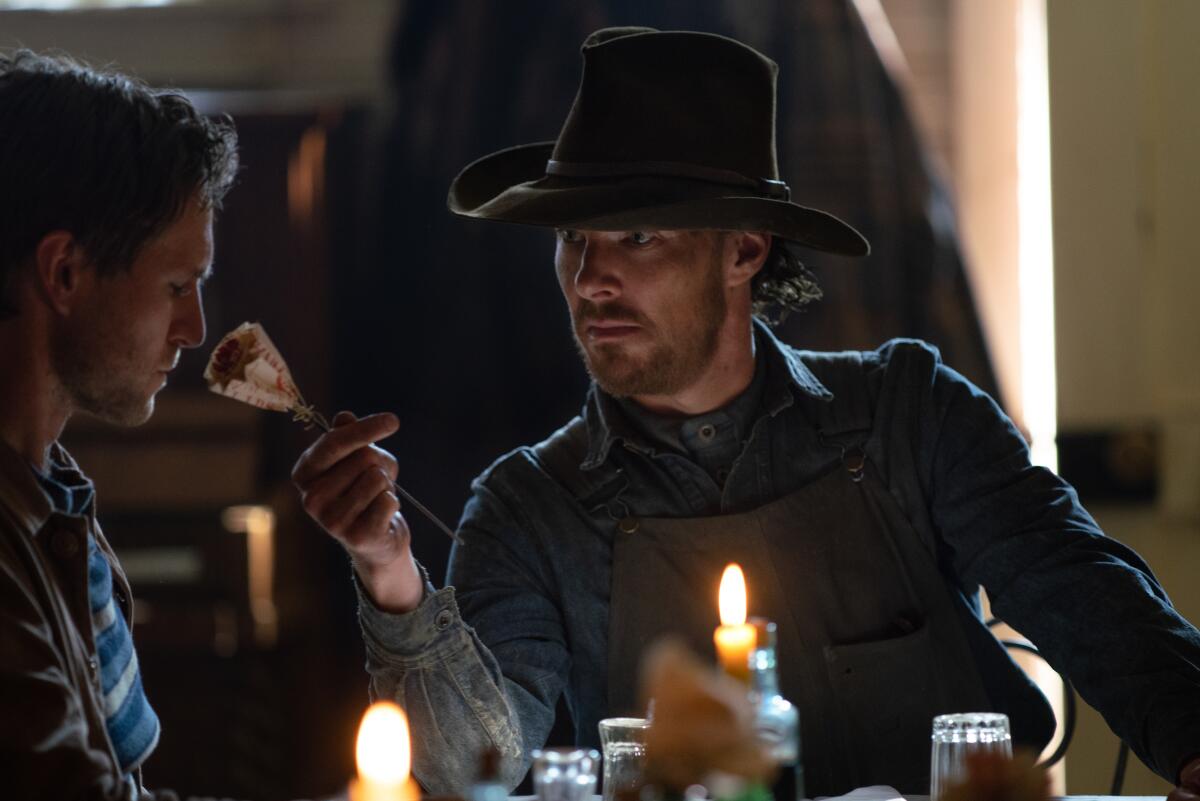
Which brings us to the scene in the barn where Peter infects Phil with the anthrax. It’s such a delicate dance between these two men, and dare I say ...
You felt bad for Phil? I’m right there with you. Phil’s walls, the walls that have solidified for so long, are gone and his mask is removed. We learn the truth about his love for Bronco Henry. And, yes, he may have been groomed, but I think what he had with Bronco Henry was genuine. He was in love. And he had to hide that from the world. Whereas Peter ... Phil envies Peter because he can completely be himself. It’s interesting how they swap roles. Peter becomes the darker, crueler figure and Phil the more innocent child with a great deal of trauma. When Peter’s holding the contaminated rope with his gloves on, I believe he’s thinking about Phil. And it hurts.
Do you think Peter ever considered scrapping his plan and sparing Phil?
No. It was the same thing with the rabbit he killed so he could dissect it. He’s going to do what he has to do. And even though for Peter this might possibly his first interaction with intimacy or love for another person, he’s willing to sacrifice that for his mother.
Kirsten Dunst discusses her dream of working with Jane Campion, acting opposite her partner Jesse Plemons and surviving depression.
You mentioning Phil envying Peter because he’s so self-possessed reminded me of Peter’s white shoes. They look so out of place on the ranch ... which, again, is a bit of misdirection, isn’t it?
Yes! The shoes symbolize Peter’s confidence and his unwavering spirit in the face of judgment. He likes those shoes, and he doesn’t care if you don’t. And I love that after he kills Phil, he puts away the cowboy boots and the hat and slips on the tennis shoes again. He jumps right back into who he is and who he always was.
Who do you think Peter is in 10 years?
A lot of us have that question. Norman Bates, possibly, in “Psycho”?
He’s running a hotel with Rose’s skeleton in a rocking chair upstairs?
I think he just became an acclaimed doctor. Very good at his job. And I think it’s even more fascinating that this just becomes one of the stories of his past and no one ever finds out. He goes out and does exactly what he wanted to do, which is to become a good doctor, like his father was. That’s how much more eerie. Killing Phil was just something he had to do, and now he’s gone on with his life. Probably still wearing those white tennis shoes.
In Screen Gab No. 15, we discuss a disappointing season of ‘Selling Sunset,’ draw up a guide to Jane Campion’s movies and say goodbye to ‘PEN15.’
More to Read
Only good movies
Get the Indie Focus newsletter, Mark Olsen's weekly guide to the world of cinema.
You may occasionally receive promotional content from the Los Angeles Times.
